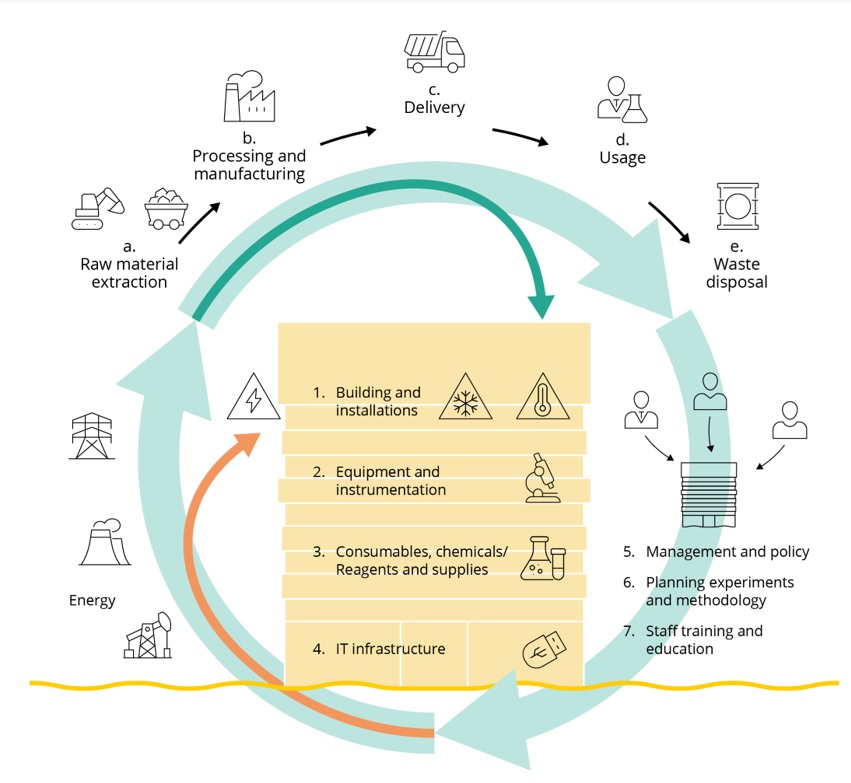Sustainability
“We are continuously working to reduce the environmental footprint of our research activities, contributing to solutions in the broadest sense.”
At GeoLab we strive for scientific excellence using sustainable practices. As we recognize that conducting research in laboratories, including our own, has a substantial environmental impact. For instance, it is estimated that labs consume 5 to 10 times more energy than typical offices and generate about 2% of global plastic waste each year.
We actively seek to integrate sustainability into every aspect of the research lifecycle. As we embark on our sustainability journey, we have adopted a holistic strategy focused on continuous learning and improvement. This journey begins with a comprehensive understanding of what lab sustainability truly entails, including the determination of the environmental footprint, the identification of key areas and the implementation of actions, which can be taken to reduce the impact on the environment.

Environmental footprint of labs including physical aspects (1-4), organizational and behavioural factors (see 5-7). ©Boaz Chemtob & Margot Stoete
The environmental footprint of labs refers to their total impact on the environment, including greenhouse gas emissions, resource consumption, and waste production. Another key aspect is the consumption of materials, known as the “product lifecycle“, which includes everything from lab equipment to the building itself. Labs emit greenhouse gas emissions partially from the energy needed to power equipment and installations.
The environmental footprint of the product lifecycle in labs include:
![]() Raw material extraction:
Raw material extraction:
-
- Taking materials like metals, plastics, and chemicals from nature uses energy and harms ecosystems.
![]() Processing and manufacturing:
Processing and manufacturing:
-
- Turning raw materials into lab equipment and supplies involves more energy and often produces pollution.
![]() Delivery:
Delivery:
-
- Transporting these materials to the lab generates emissions from vehicles.
![]() Usage:
Usage:
-
- Using lab materials and equipment consumes energy and creates waste.
![]() Waste disposal:
Waste disposal:
-
- Discarding used items adds to pollution and landfill waste.


